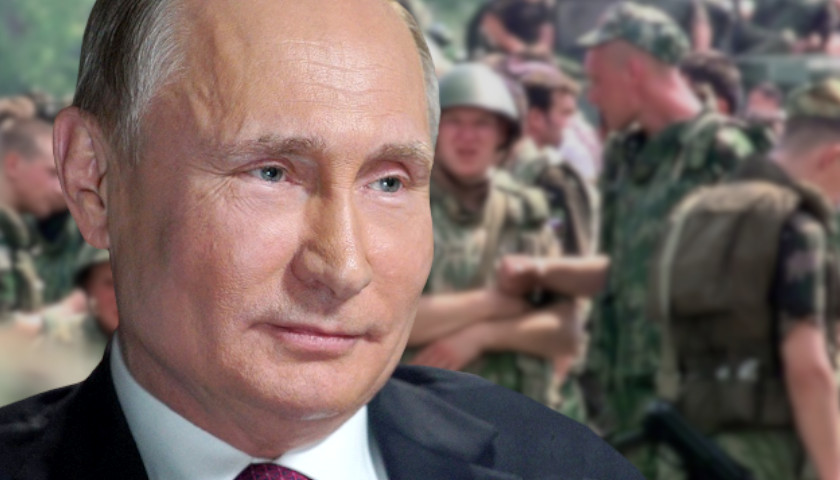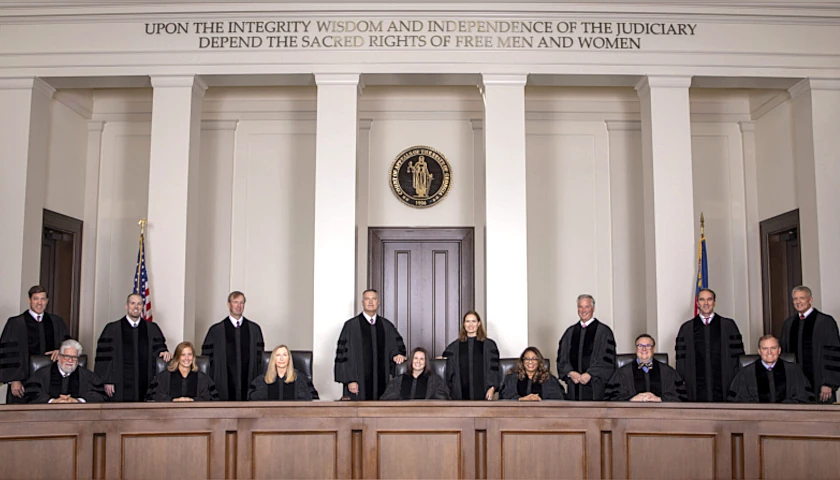by Andrei Illarionov and J. Michael Waller
Russia’s months of military movements and Biden’s “strategic communications campaign” are psychological operations intended to intimidate Ukraine, Europe, and the rest of the world.
There won’t be a big war any time soon. The Kremlin’s low-cost, high-impact campaign might succeed if some Western leaders, especially in the United States, can help Putin.
Since October 30, American news outlets, fueled by leaks, have warned of an upcoming, full-scale Russian offensive to take Ukraine whole or in pieces.
Last month, Joe Biden threatened devastating retaliation against Russia before making an exception for any “minor incursions” Moscow might make. Biden’s gaffe alarmed Ukrainians far more than anything Putin said or did.
Then the State Department folded, telling American citizens to leave Ukraine immediately and that they’d have to find their own way. The U.S. Embassy in Kyiv sent most of its personnel packing and moved its consulate to temporary exile to Lviv.
Following the U.S. call, nearly 20 other countries pulled out their people. Biden warned NATO allies that a world war could start as early as February 16. The panic caused insurance companies to stop covering commercial aircraft, shutting down air travel to Ukraine by February 14.
For the price of fuel for the mobilization, setting aside the Russian military’s fixed costs, Putin was able to leverage Biden to tank Ukraine’s struggling economy in weeks.
Moscow’s Objectives
The Kremlin’s main goal is to intimidate Ukraine to surrender preemptively to Putin by agreeing to execute the Minsk Agreements of 2015. Ukraine considers the Minsk process a Trojan Horse that would end up exploding the country.
Moscow and Washington are trying to force the Ukrainian leaders to avoid would-be destruction from Putin’s incursion by agreeing to a Minsk “compromise” with relatively “small” losses.
Psychological Warfare
Even if Ukraine holds its ground, there will be no big war. At least not for now.
Provocations on the line of contact and on the border, of which there have been many since 2014, are practically inevitable. So are local hostilities.
But in the foreseeable future there will be no large-scale war of Russia against Ukraine, let alone a European war or World War III.
It’s all a psychological campaign. How do we know?
First, U.S. intelligence doesn’t understand Putin’s logic. Western services failed to see Russia’s preparation to attack Georgia in 2008 or occupy Crimea in 2014, or to attack Ukrainian positions near Ilovaisk and Debaltseve in 2014-15.
For all its investments in collection, the U.S. intelligence community has a poor analytical track record. It failed to anticipate the Soviet collapse and the 9/11 attacks. It misinterpreted the intentions of Saddam Hussein in Iraq. It failed to foresee the aggressive rise of China. And then there’s Afghanistan.
Second, Putin has made no attempts to conceal his troop movements over the past three months. To the contrary, he readied his earlier attacks on Georgia and Ukraine in secret. When Putin acts openly, he is not preparing a real attack. He is running psychological operations of bluff, blackmail, and intimidation.
Third, simply because Russian forces are “concentrated against Ukraine” does not mean they are poised to invade. Posture does not indicate readiness.
Fourth, the greatest estimate of Russian troop strength concentrated near Ukraine has declined since September, from 200,000 during the Zapad-2021 joint maneuvers with Belarus to 147,800 this month.
Fifth, those 200,000 aroused no international alarm. One is hard-pressed to find an article then about a Russian threat to invade Ukraine. Yet since October 30, several hundred stories about an “imminent” Russian attack have appeared in English alone.
Sixth, maps of the supposed, predicted hostilities in Western news outlets appear designed to create an emotional impact without hard factual bases.
For example, a November 21, 2021 map published in the Military Times shows two Russian formations aimed at capturing the cities of Kyiv and Kharkiv. The map would have readers believe that Russia could capture or encircle cities of 1.5 million and 3 million people, respectively, with a combined 12,000 troops at most. This is laughable.
The 1943 Soviet offensives against Kharkiv required 980,000 troops, and Kyiv another 671,000. Plus occupation forces for large areas in the overall theaters of operations. Technology might have reduced the number of troops needed for an operation, but nowhere near the suggested scale.
Seventh, Russia has an insufficient minimal troop size concentrated “near Ukraine” to defeat Ukrainian fighters and capture significant territory of the country. Those amount to 148,000 Russian troops and 32,000 pro-Russian separatists, or 180,000 soldiers. It is not enough to capture the most important military, political, administrative, transport, and industrial targets.
The Ukrainian military has extensive combat experience, definitely not less than Russians and pro-Russian separatists. In the eight-year eastern Ukraine war, 100 Ukrainian combatants died for every 138 Russians/pro-Russian separatists.
Ukraine has 261,000 soldiers and officers, with an anticipated increase of 100,000, plus 200,000 in active reserve, plus 400,000 veterans of the war in Donbass. Ukraine’s civilian population is ready to fight for freedom and independence of their country.
Putin knows all this. He won’t start a major war if he thinks he has a chance to force Ukrainians to surrender. For that, he needs the Western leaders to help.
– – –
Andrei Illarionov is a Senior Fellow at the Center for Security Policy in Washington, D.C., and a former Economic Advisor to the Russian President. J. Michael Waller is Senior Analyst for Strategy at the Center for Security Policy.
Photo “Vladimir Putin” by Пресс-служба Президента России. CC BY-SA 4.0.








